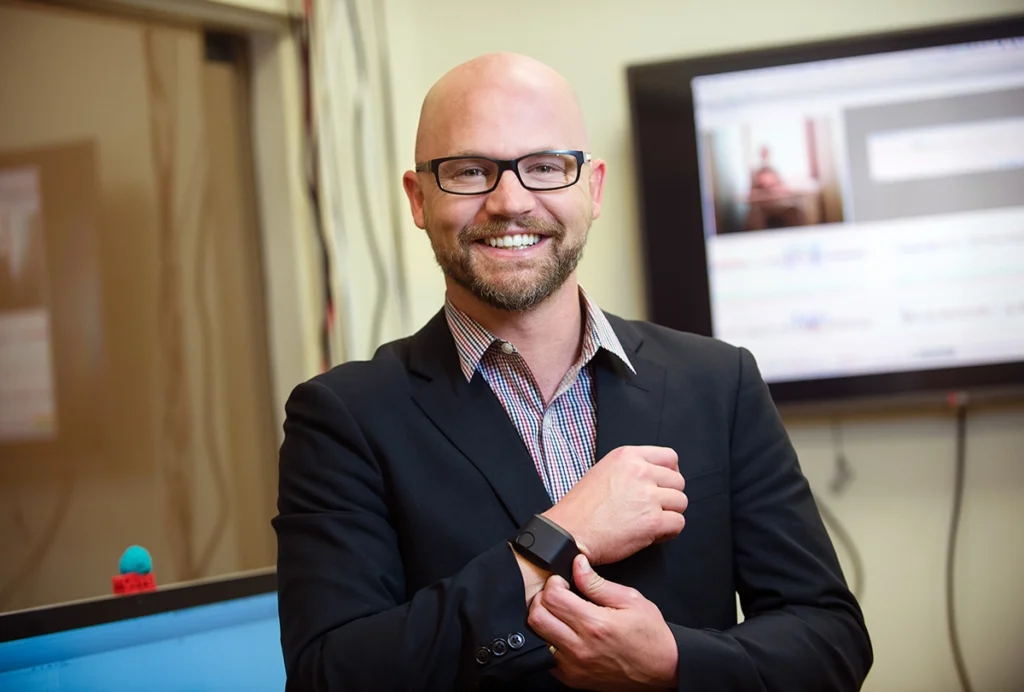Cognition and behavior: Language location askew in autism
Infants at high risk of developing autism do not show the typical tendency to shift their language processing ability to one side of the brain around 9 months of age, according to a study published in December in Developmental Cognitive Neuroscience.
Infants at high risk of developing autism do not show the typical tendency to shift their language processing ability to one side of the brain around 9 months of age, according to a study published in December in Developmental Cognitive Neuroscience1.
Siblings of children with autism are at a 20-fold greater risk of developing autism compared with the general population. Several teams are tracking the development of these so-called ‘baby sibs’ in an effort to find early indicators of the disorder.
Some teams use electroencephalography (EEG), a noninvasive imaging method that involves electrodes placed on the scalp to detect spikes of brain activity. Certain stimuli, such as an unexpected sound, produce spikes, which indicate groups of neurons firing together. Delays or changes in the magnitude of these spikes may signal problems in brain activity.
In the new study, researchers measured infants’ response to language when they were 6 months, 9 months and 1 year old. The researchers obtained useful EEG measures from at least one of these time points for 62 high-risk infants and 46 controls, and from all three time points for 14 high-risk infants and 12 controls.
The children listened to recordings of a speaker repeating one syllable with occasional differences in pronunciation. For example, after saying the syllable “da” several times, the speaker occasionally said “ta,” as well as a syllable in Bengali, an Indian language. This sound is made by a dental stop — by hitting the teeth with the tongue — and is indistinguishable from ‘da’ to many English speakers.
Before 10 to 13 months of age, all infants, regardless of nationality, can hear a wide range of sounds. Once their language ability specializes, however, they lose the ability to distinguish some sounds not in their native language.
This developmental feature is present in both groups of infants, the researchers found. At 6 and 9 months of age, both sets show different EEG activity for the dental version of ‘da’ than for ‘da.’ At 12 months, their EEG signal only differs in response to ‘ta’ but not to the dental version, suggesting that their brains have become more attuned to English in the intervening months.
However, the brains of control infants show a larger EEG response in the right hemisphere than in the left hemisphere at 9 and 12 months of age. The brains of high-risk infants do not show this difference between the hemispheres.
This suggests that the right hemisphere may begin to specialize for language detection at around that age in control infants, but not in the baby sibs.
Although many studies suggest that the left hemisphere is dominant when processing language, functional magnetic resonance imaging studies have seen stronger activity in the right hemisphere, the researchers say. A stronger EEG response does not necessarily indicate that brain activity itself is stronger, and so the question of which side of the brain is dominant is still open.
The researchers also have preliminary data showing the same delay in specialization when baby sibs process faces. Together, these results suggest that the developmental processes that wire the brain are atypical in children who develop autism, they say.
References:
1: Seery A.M. et al. Dev. Cogn. Neurosci. 5C, 10-24 (2012) PubMed
Explore more from The Transmitter

Crowdsourcing to curb aggression in autism: Q&A with Matthew Goodwin

